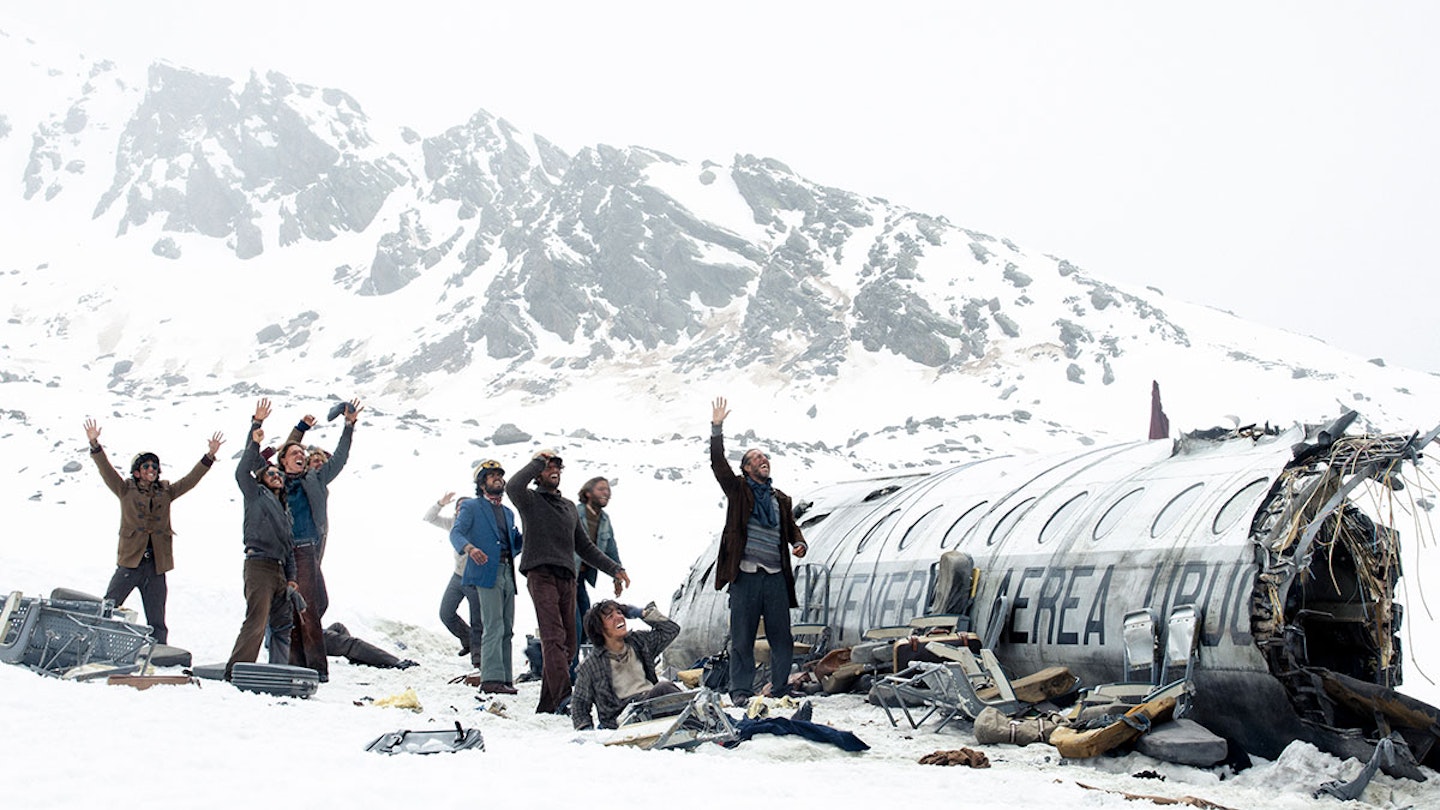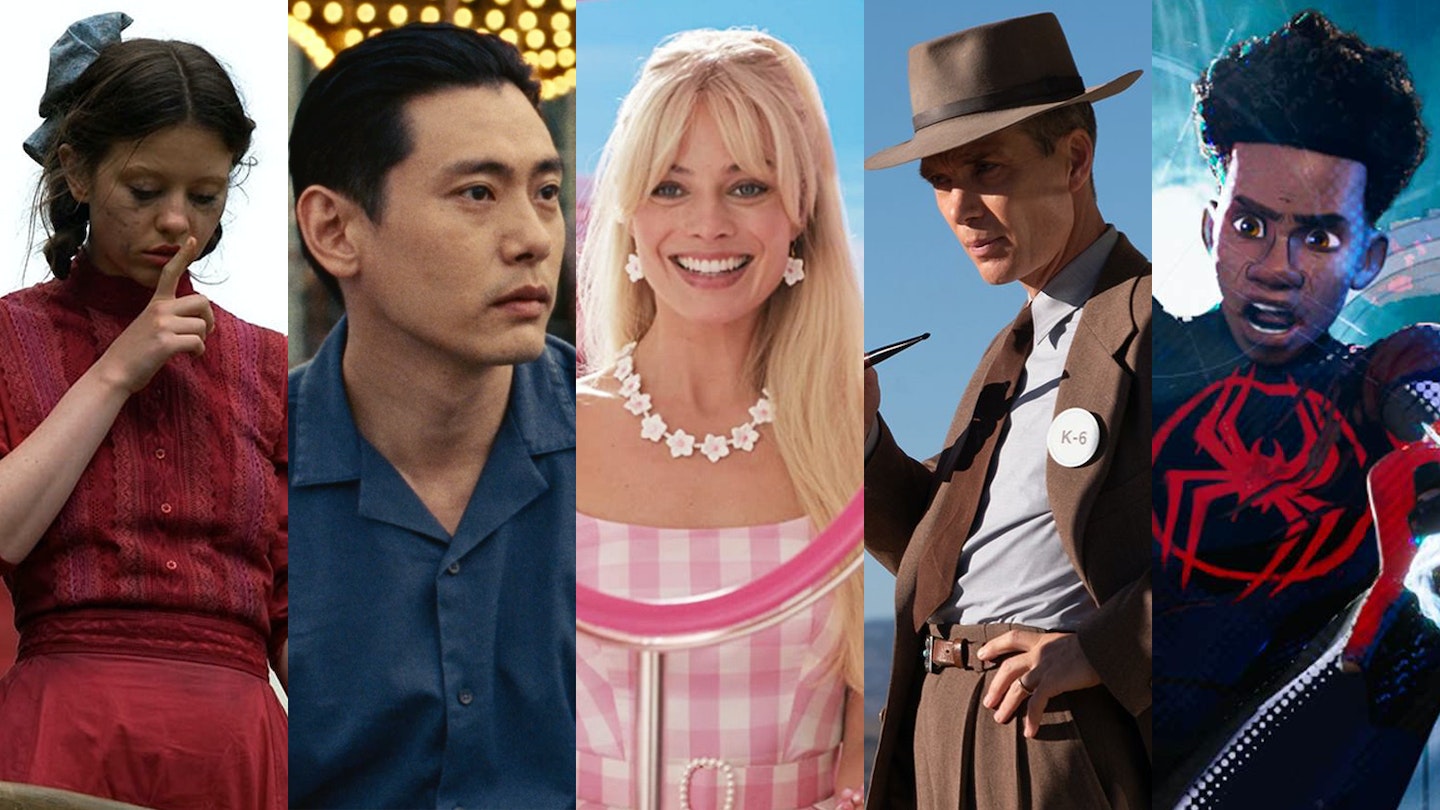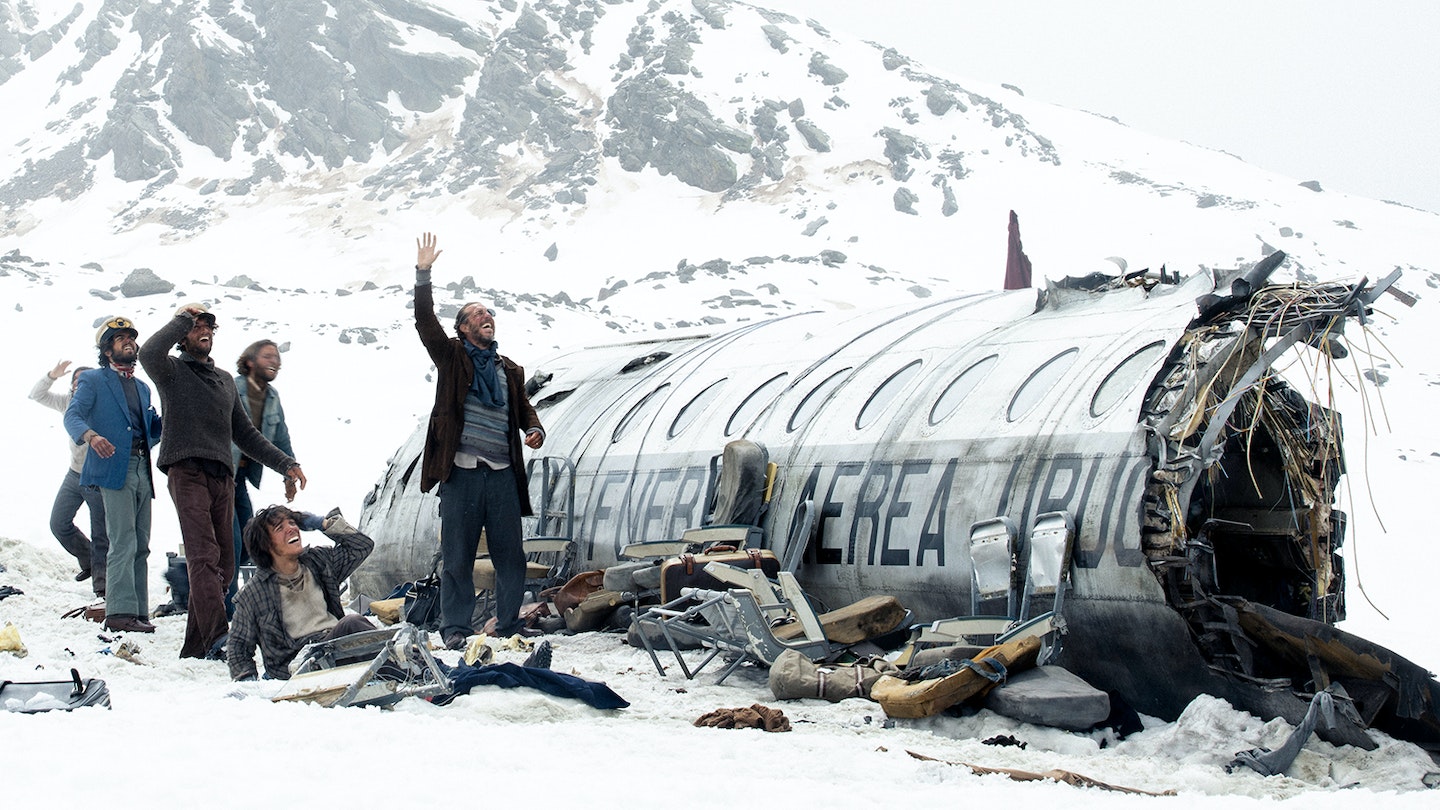J.A. Bayona is no stranger to films about survival. In 2012’s The Impossible, he followed a tight-knit family trying to outlast the 2004 Indian Ocean tsunami. With Society Of The Snow, it’s a Uruguayan rugby team who find themselves stranded in the Andes. And while the story of the disastrous Flight 571 has been told on screen before in Frank Marshall’s 1993 movie Alive, this version has the benefit of a Spanish-speaking cast and Uruguayan journalist Pablo Vierci’s 2009 book of the same title as a source, which includes testimonials from the survivors of the real-life crash. The results are both grand and intimate.

Let’s start with the grand. Bayona wastes little time introducing us to the ill-fated passengers and members of their families — before plunging us into the horrific crash, which is rendered in visceral, heart-pounding detail. The plane breaks apart during its descent and its occupants either immediately ripped away or seriously injured, the camera lingering on each painful detail for just long enough to yield the maximum impact. The grim sequence is executed with exacting precision that shocks the senses, belying its ultimate small-screen confines; it is eventually finding a home on Netflix, but for this moment alone it’s worth watching on the big screen.
The camaraderie and the disagreements between the survivors are deeply felt.
In the aftermath, it’s the characters and the dynamics between the remaining members of the group that take centre stage. The beats here are familiar — initial bursts of hope give way to despair, while any and all temporary solutions slowly evaporate — but Bayona and his team of screenwriters do an excellent job of slowly ratcheting up the desperation, to the point where the most unforgivable and unthinkable of sins becomes routine.
Enzo Vogrincic brings an understated but heartfelt humanity to Numa Turcatti, who also provides voiceover narration at various critical junctures. But though he may be a focal point, this is very much an ensemble piece. The camaraderie and the disagreements between the survivors are deeply felt, and the initially optimistic Marcelo Pérez del Castillo (Diego Vegezzi), resolute Nando Parrado (Agustín Pardella) and more all get their moments to shine.
The performances are aided by the filmmaking and the elements themselves. Regular Bayona collaborator Michael Giacchino accentuates proceedings with a score that alternates between haunting horror chords and moving melodies. And it’s evident that the movie was filmed largely on location, Pedro Luque’s striking cinematography capturing both the beauty and the harshness of the conditions, the biting cold bleeding through the screen as if by osmosis. In more ways than one, Bayona makes us feel like we’re there.


